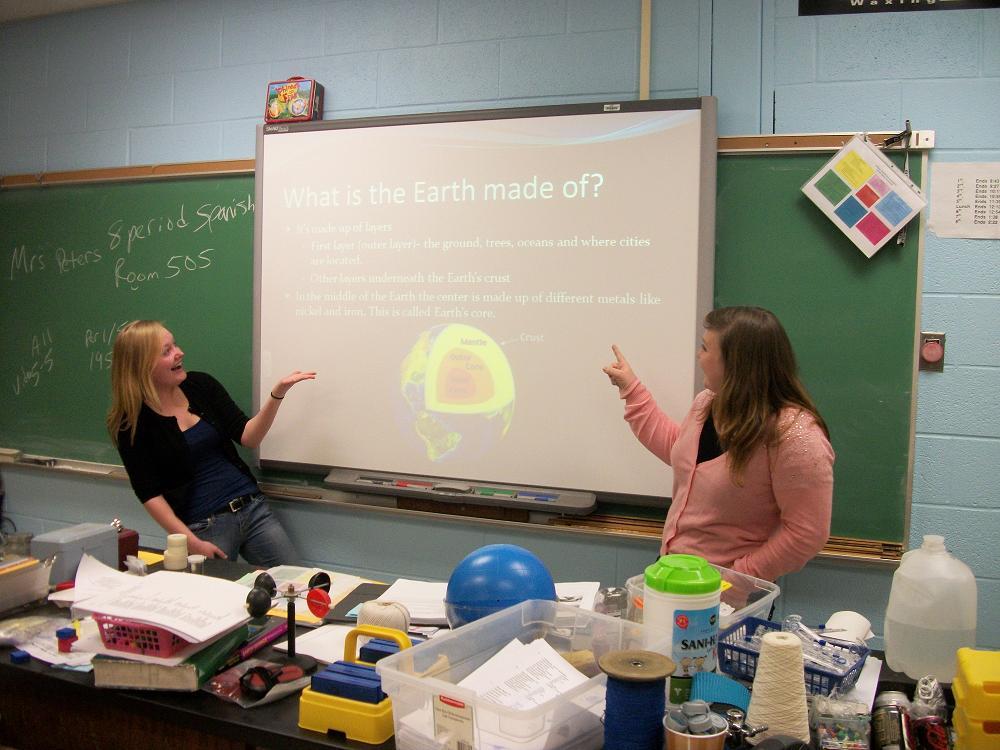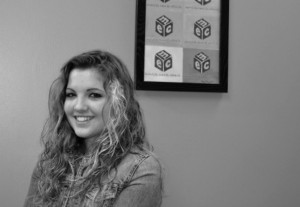GALWAY– Mr. Levin and two of his Earth Science students, Gabrielle Urban and Jenny Metzger, were enthusiastic to enlighten first grade students by exploring some frequently asked questions. Mrs. Frisbie’s curious class visited Mr. Levin’s classroom on January 30 so their questions could be answered. The class proposed many scientific questions which were later reduced and combined into 10 main questions:
1. What is the temperature right now?
2. How does the earth revolve around the sun?
3. Are there any planets like earth?
4. How do seasons change?
5. What is the earth made of?
6. How were colors made on earth?
7. Are aliens real?
8. Do they have summer in the North Pole?
9. Are the stars big or small?
10. Why are there a sun and a moon?
Gabrielle Urban and Jenny Metzger created a Power Point to guide their presentation. They first began explaining temperature and how it changes day by day. Then they explained the concept of the sun’s gravitational pull by using a brightly dressed 1st grade student named Shawn as the sun. Mr. Levin demonstrated revolution by walking the earth (a globe) in a path around the sun (aka Shawn). Urban and Metzger also explained how revolution causes seasons, because the earth is not straight up and down. They used a flashlight to show how seasons occur based on tilt and where the sun hits earth. While the earth revolves around the sun, it also rotates itself. To give the students a clear idea of this in their mind, the class all stood up and demonstrated the act of rotation.
Urban and Metzger next answered a dizzy student’s question: “Are there any planets like earth?” There is yet to be known a planet like earth that can support us, but they pointed out some similarities between earth and other planets such as Venus containing volcanoes. Earth contains more water than any other planet and is composed of layers. They made this easy for first graders to imagine by using the correlation to tootsie pops.
If this wasn’t enough to excite the young students, they were amazed when looking though special glasses and seeing the rainbow colors of white light. A yellow tee shirt is yellow because it reflects yellow rays and absorbs all others. For example, Newton observed that color is not inherent in objects. Rather, the surface of an object reflects some colors and absorbs all the others. We perceive only the reflected colors. The colors we see are the colors that are not absorbable.
Are there other things out there we can’t see? The students were anxious to learn about aliens, but with no scientifically proven evidence, they were only able to say there is a possibility there are different forms of life outside of earth.
“Is the sun the moon?”
“How was the sun made?”
“Why do you see the moon in the morning some time?”
“What planet did the dinosaurs live on?”
The students were also curious about the space beyond the earth: the universe. In relation to the earth, the stars are larger. In fact, some stars are larger than the sun but this is unrecognized due to distance. The sun itself, is a star, and was created before the earth. The moon however was created as a result of a planet like object colliding with the earth. The moon is up all the time, but only visible at different angles. To sum it all up, Urban and Metzger explained that the dinosaurs lived on the same planet earth as we do now.
“It was cool!”
“You two girls are the best!”
After the students thanked them, commented on the presentation, and returned to the elementary school, I asked the presenters how they thought it went over. Jenny and Gabby told me how nerve-wracking it was at first because they had no idea what to expect. The highlight of this experience for them (and me as well), was seeing the reaction from the students as they played with the glasses. Mr. Levin commended his student by telling them how great of a job they did presenting, “it was awesome.”



Michelle • Feb 8, 2013 at 1:21 am
Great job girls!